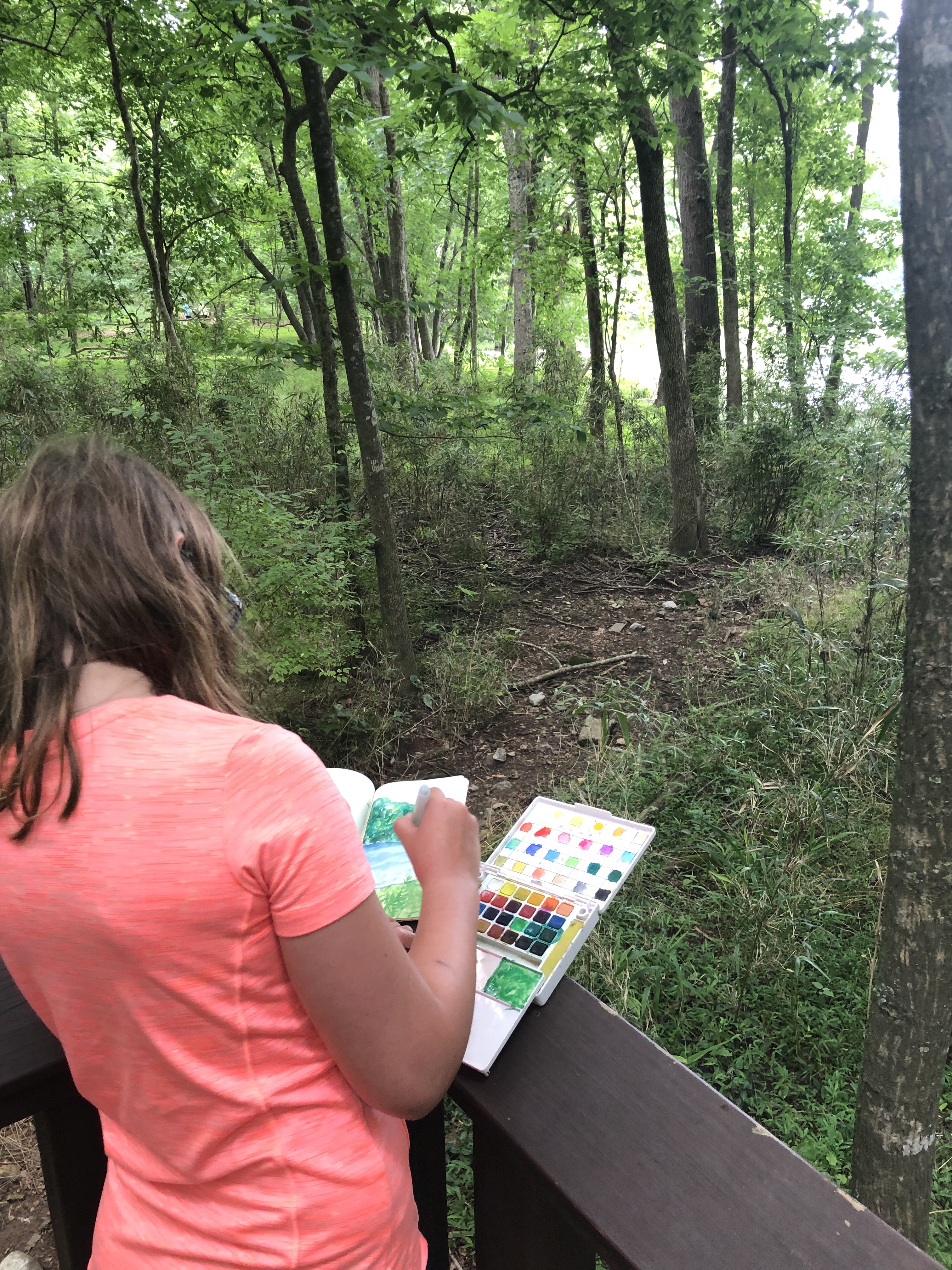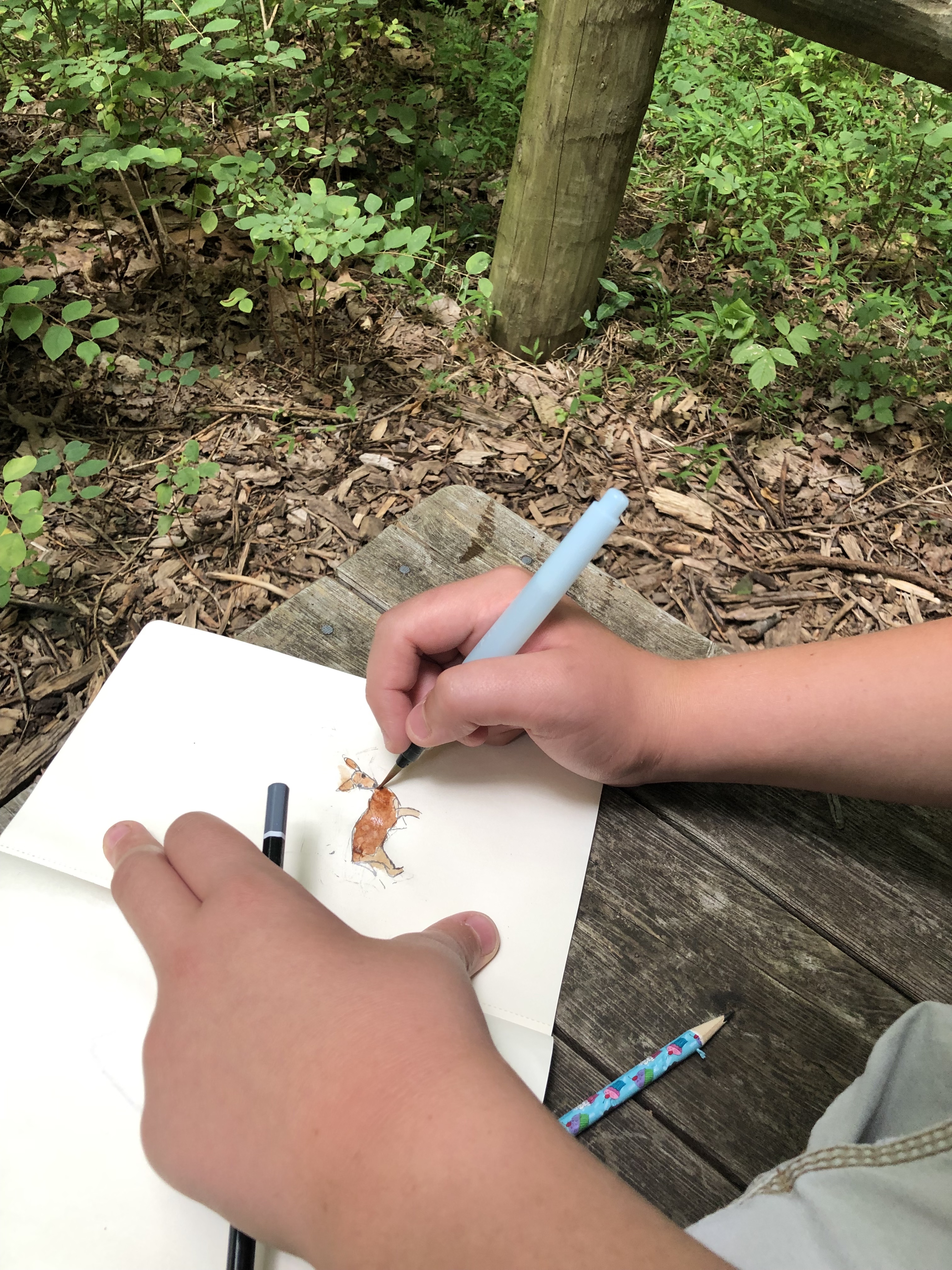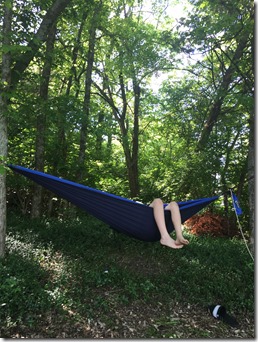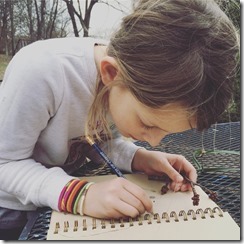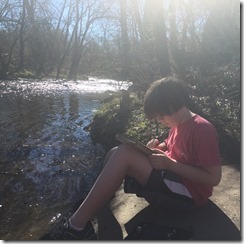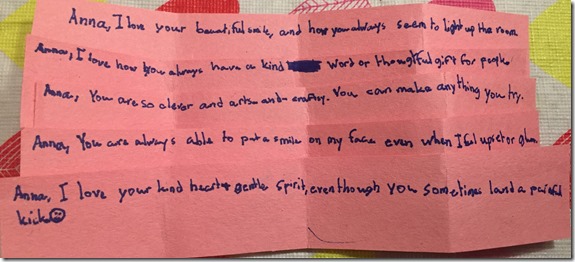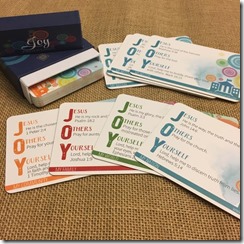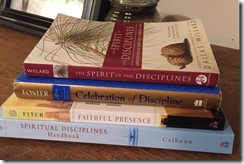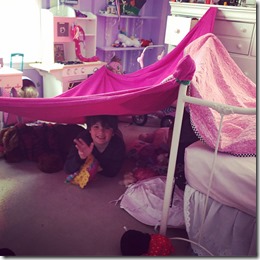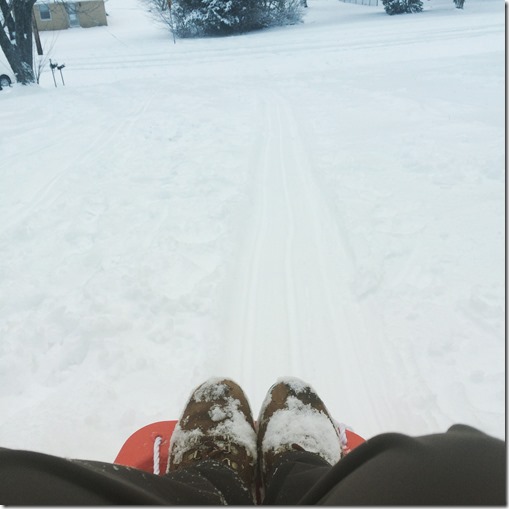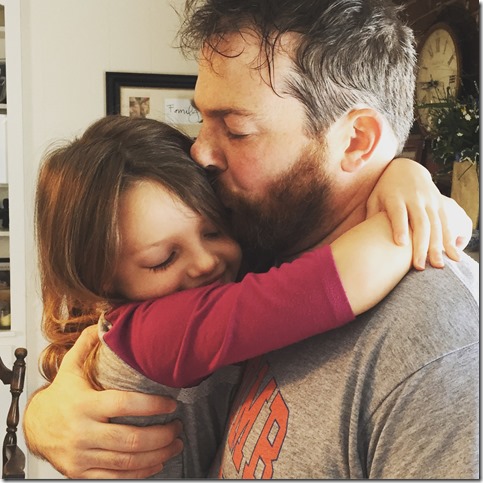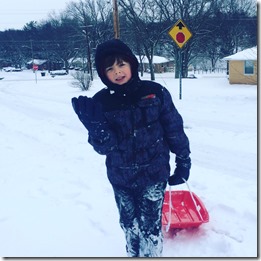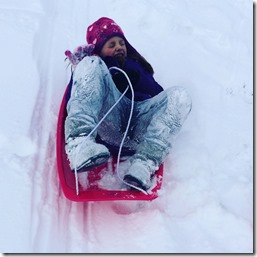In these anxious times when giant headlines and worldwide fears dominate, small tragedies tend to go unnoticed. Whether noticed or not, the world changed on Tuesday evening, a change that on a global level might seem tiny, but in the kingdom of God was seismic: after 94 years on this earth, Dottie Travis went home to be with her Father. She was more than ready to go, but even as I felt relief for her, I sensed the world fade a little. It’s just a little less bright without the light of one of its saints. And to me, Gramma Dottie was a true saint: selfless, loving, kind, gentle, patient to the end. She raised both my mother-in-law, Glenda, and her brother, Rob, who was profoundly disabled with cerebral palsy, with compassion and care.
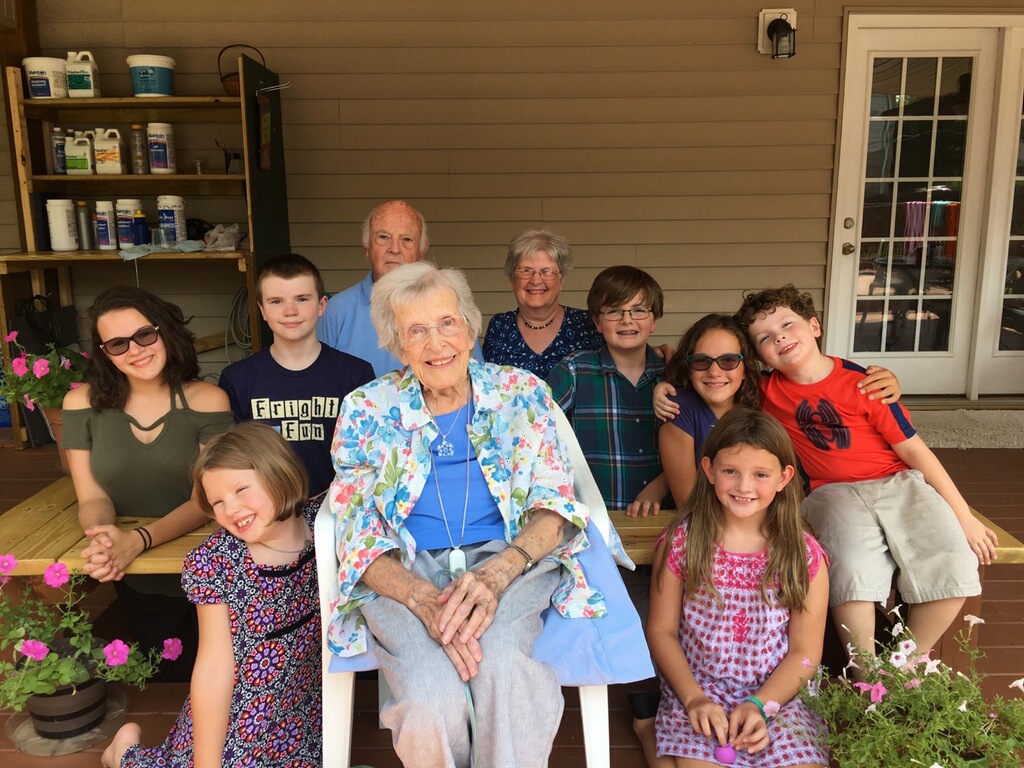
Even though she was not blood-related to me, she was every inch my grandmother, and I have so many rich memories with her. Among them:
*Meeting her for the first time at her house in Atlanta when Greg and I were dating. I was immediately charmed by her hospitality and her kindness, and I enjoyed getting to know her as we packed her house together. She was about to move to Alabama so that she could be closer to her son, Rob, at his group home. Even though I was only in that Atlanta house once, it holds wonderful memories. Not only did I meet Gramma, I met her younger brother, Joe, who shared her gentle spirit, and his wife, Betty, who had me in stitches with her colorful stories about Greg’s birth and childhood. Also, Greg told me he loved me that night for the first time, moving me one step closer to these wonderful people becoming part of my family.
*Sitting around her kitchen table a few years later in Alabama with her, Greg, Joe, and Betty, while Gramma tried to tell a joke about a chicken in a freezer. She got so tickled with the joke that she couldn’t get to the punch line for laughing so hard, which in turn had the rest of us laughing helplessly. We sat around that table, all shaking with laughter, with tears streaming down our faces. Greg said later he’d never seen Gramma laugh that hard. I’m not sure I’VE ever laughed that hard.
*Coming to visit her in her house in Springfield, TN, several years ago, as she approached age 90. I entered to find her reading Francis Chan’s Forgotten God, a recently published book about the Holy Spirit. Turns out, Gramma was going to reteach a lesson series she had developed on the Spirit years ago, and she wanted to update it with the latest thoughts. I loved that even at age 90, she was still reading, learning, and growing.
*Getting to show her the printed out rough draft of my Bible study in the summer of 2018 while she was living at Greg’s parents’ house in Nashville. And also getting to deliver the published version in the fall of 2019 to her at her assisted living home. She was always a huge cheerleader and encouragement to me and loved the idea that I was writing Bible lessons.
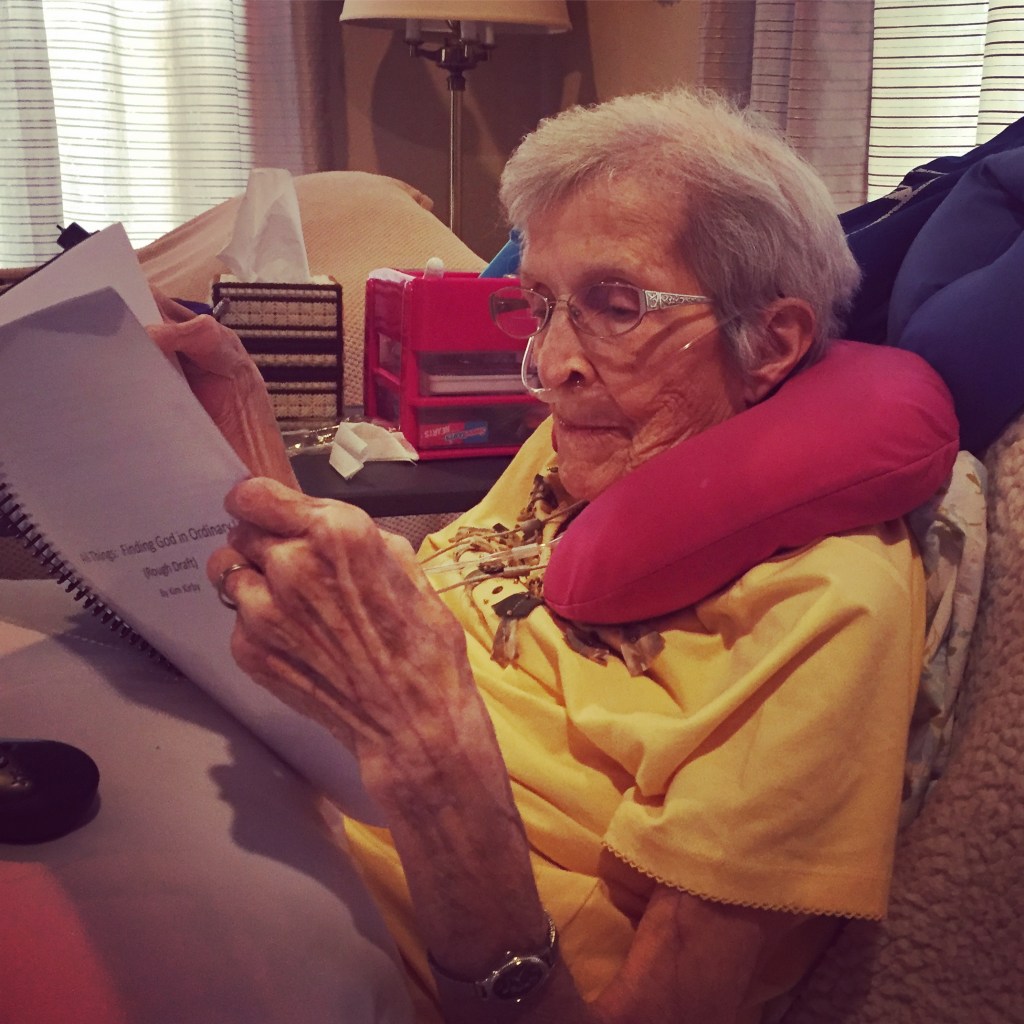

*Playing Spinners with her and the kids one evening this fall. A helper came to get her for dinner before we were done, and she balked until I assured her the kids and I would come back afterward. We dutifully arrived to finish our game an hour or so later to find that Gramma had smuggled cookies for us from the dining room. I never knew she could be so sneaky!
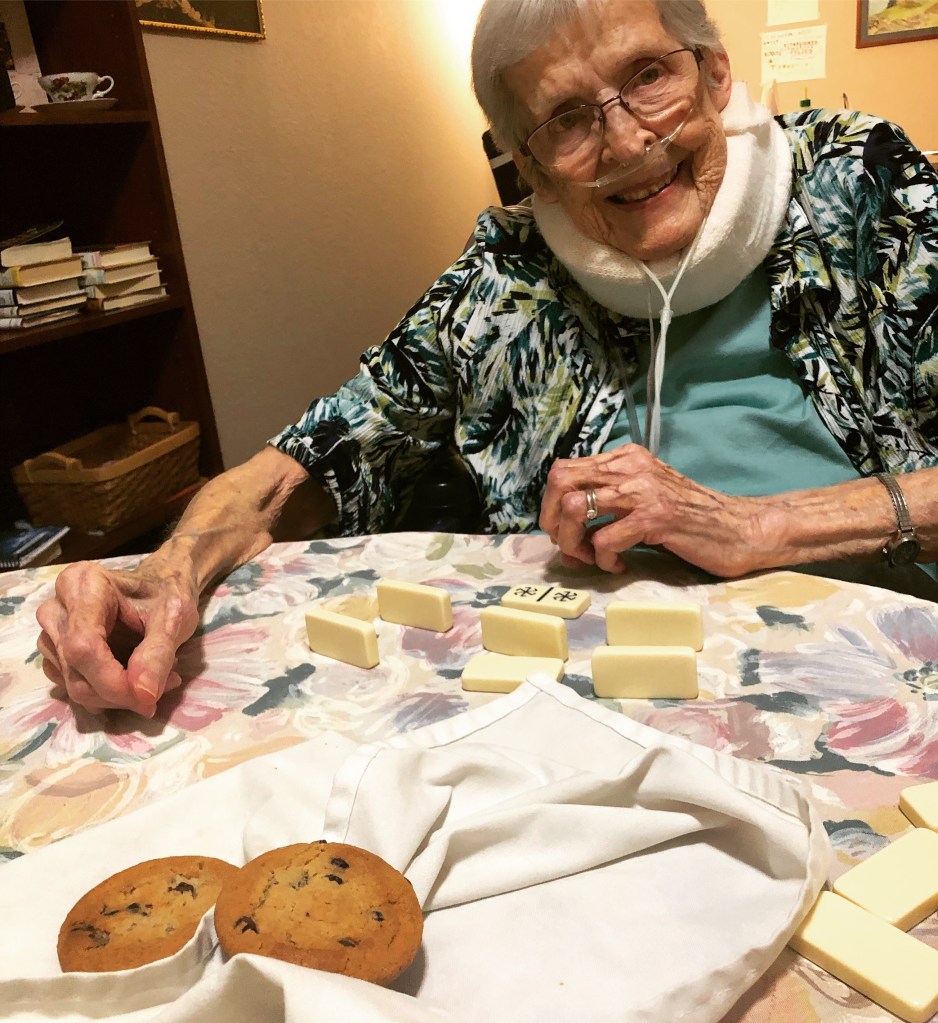
Over the years, Gramma and I have sung together, prayed together, and read Scripture together. She was one of my best mentors and one of my favorite people on the planet. A few months ago, she was jokingly bemoaning the loss of her good looks, and I told her, with 100% honesty, “Gramma, you look absolutely beautiful. I’m not joking.” I paused to consider why she still possessed such stunning beauty after so many decades. “I think it’s the sainthood,” I concluded. We laughed, but it was true. Her transformation into the likeness of Christ after ninety years was so profoundly thorough that it illuminated her features.
A week ago, Gramma had a stroke, which was one of her greatest fears. The next day, Glenda said it was a good time to visit her, so I did. What I found was so sad: Gramma had lost control of most of her limbs, with the exception of her right arm, and her expression was constantly cast to the right. Though she seemed relatively alert, she couldn’t look at people and could barely speak. At one point, though, she managed to look right at me. It was to be the last time she would ever do so. And she told me, with difficulty, “Anna needs to come hang Easter eggs on the tree.” Anna had been decorating Gramma’s small tree to match the holidays of the year. For Valentine’s Day, she’d made lots of little hearts to hang on it, and now it was time for Easter eggs. Gramma was right.
So the next morning, our whole family sat down to decorate dozens of paper Easter eggs, and that afternoon, when I went to sit with Gramma for a couple of hours, we all went to hang them together. Gramma never woke up during those hours. I doubt she ever saw the Easter eggs.

And yet, I’m glad that was her last request, and I’m glad we hung them. Those little paper eggs, as silly as it might seem, are symbols of a profound faith that everyone in that room held: the faith in a resurrection, the faith that even though every single body in that room would perish one day, our souls would live on. As Gramma passed from this life to the next a couple days later, that faith strengthened all of us. After all, it was that faith that had bonded us together all these years, that faith that she fed in me and in everyone around her, just by living it out so beautifully herself.
If ever anyone heard, “Well done, good and faithful servant,” I know it was Gramma after almost a century of living a life of love. And so, in the midst of the craziness of the coronavirus, I am mourning something that might seem much smaller but that actually is massive: the passing of one of the best women I know. I pray that one day, I will have her love, her patience, and her kindness. May we all have them in these anxious times.
